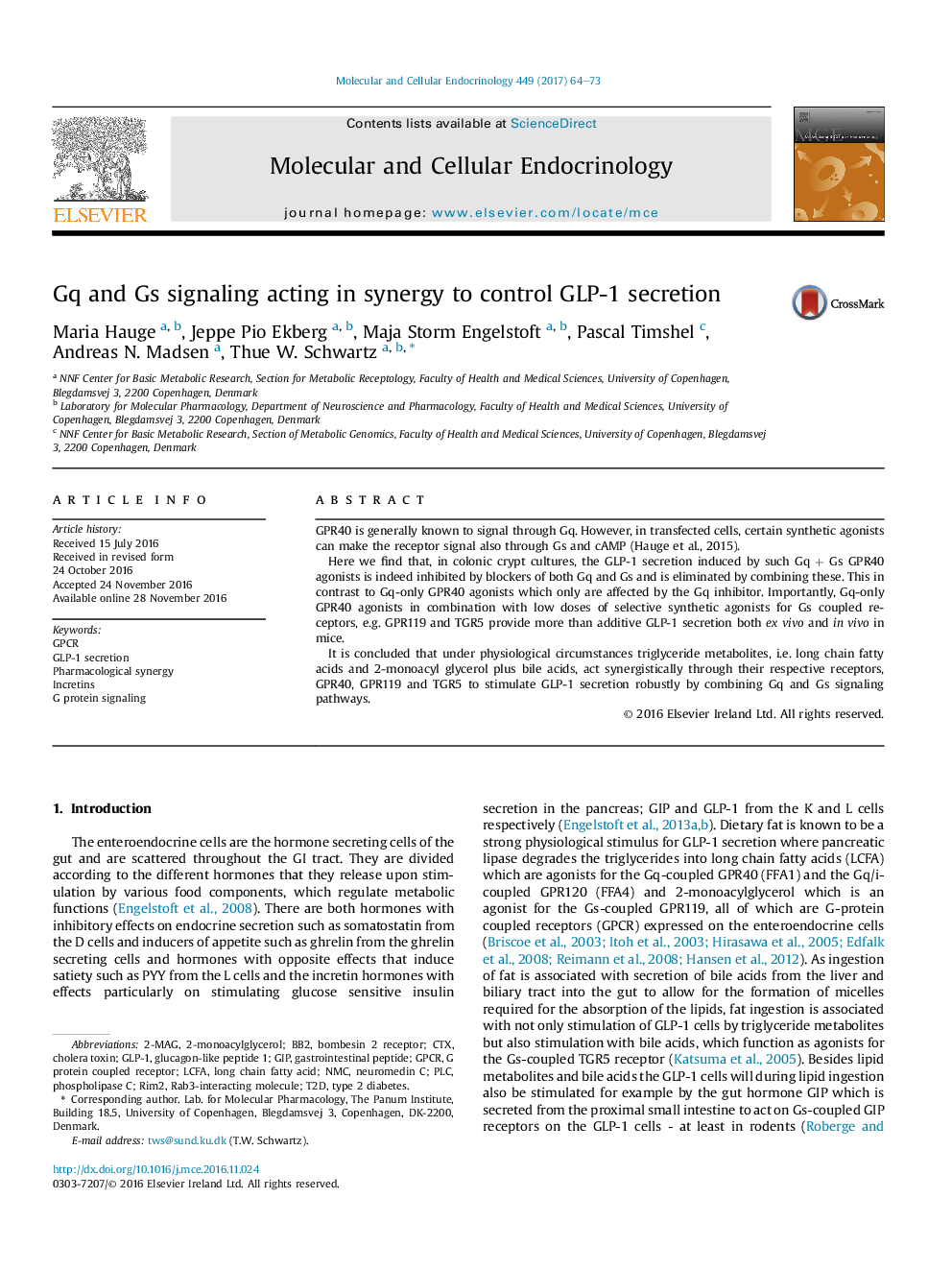| Article ID | Journal | Published Year | Pages | File Type |
|---|---|---|---|---|
| 5534069 | Molecular and Cellular Endocrinology | 2017 | 10 Pages |
â¢Gq and Gs acts in synergy to stimulate GLP-1 secretion.â¢Under fat digestion both Gq and Gs pathways are activated simultaneously through the receptors GPR40, GPR119 and TGR5.â¢The synergistis effect is not seen for the other incretin hormone GIP, indicating a differential secretion pattern between the two cell types.
GPR40 is generally known to signal through Gq. However, in transfected cells, certain synthetic agonists can make the receptor signal also through Gs and cAMP (Hauge et al., 2015).Here we find that, in colonic crypt cultures, the GLP-1 secretion induced by such Gq + Gs GPR40 agonists is indeed inhibited by blockers of both Gq and Gs and is eliminated by combining these. This in contrast to Gq-only GPR40 agonists which only are affected by the Gq inhibitor. Importantly, Gq-only GPR40 agonists in combination with low doses of selective synthetic agonists for Gs coupled receptors, e.g. GPR119 and TGR5 provide more than additive GLP-1 secretion both ex vivo and in vivo in mice.It is concluded that under physiological circumstances triglyceride metabolites, i.e. long chain fatty acids and 2-monoacyl glycerol plus bile acids, act synergistically through their respective receptors, GPR40, GPR119 and TGR5 to stimulate GLP-1 secretion robustly by combining Gq and Gs signaling pathways.
